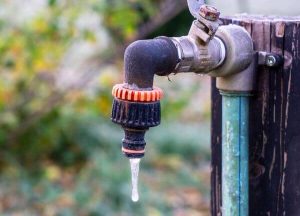The Ultimate Guide to Protecting Your Plumbing System in Winter
Winter can be a rough season for your plumbing system, with frozen pipes, clogged drains, and other pesky problems lurking around every corner. But, with the right winterization techniques, you can keep your plumbing system functioning effortlessly and avoid costly repairs. In this guide, we’ll uncover the techniques to keep your plumbing system humming like a well-oiled machine during the winter months.
 Shield Your Pipes from Winter Weather with Insulation
Shield Your Pipes from Winter Weather with Insulation
Insulating your pipes is a crucial component of winterizing your plumbing system. Winter weather can cause pipes to freeze, leading to leaks and bursts. To prevent this from happening, make sure to insulate all exposed pipes in your home, such as those in your attic, basement, garage, and crawl spaces.
There are various types of pipe insulation materials available, including foam, fiberglass, and rubber. Choose the material that best suits your needs based on the location of the pipes. For instance, foam insulation works well for pipes in tight spaces, while fiberglass insulation is ideal for larger pipes.
Wrap the insulation material around the pipes and secure it with tape or wire. For extra protection, you can also use insulation sleeves or blankets. With properly insulated pipes, you can keep your plumbing system running optimally during the winter months.
Avoid Winter Plumbing Woes with Professional Drainage Techniques
Draining your plumbing system is another crucial step in winterizing it. When water remains stagnant in pipes and fixtures for an extended period, it can freeze and cause damage. To prevent this, drain your plumbing system before winter hits.
To drain your plumbing system, first, turn off the main water supply to your home. Next, turn on all faucets and flush all toilets to allow the water to drain out of the pipes. Finally, turn off the main water supply valve and open all outdoor faucets to allow any remaining water to drain out.
Be cautious when draining your plumbing system to avoid any damage. For example, be careful when turning on and off the main water supply valve to prevent any leaks. With proper drainage, you can keep your plumbing system in tip-top shape and avoid winter-related problems.
Sustain Your Plumbing Fixtures for Optimal Winter Performance
Maintaining your plumbing fixtures is another key aspect of winterizing your plumbing system. During winter, fixtures such as toilets, sinks, and showerheads can become clogged with debris. To prevent this from happening, clean and maintain your plumbing fixtures regularly.
Clean your plumbing fixtures regularly with a mild cleaner and check for leaks. Repair any leaks you find. Additionally, consider having a professional plumber perform a maintenance check on your plumbing system to make sure it’s in good working order.
Protect Your Home from Winter Plumbing Problems with These Essential Tips
Winter can be a test for your plumbing system, but with the right winterization techniques, you can keep it functioning at peak performance and avoid costly repairs. By insulating your pipes, draining your plumbing system, and maintaining your plumbing fixtures, you can ensure that your plumbing system stays efficient during winter months. So, take the time to winterize your plumbing system and enjoy peace of mind knowing that your home is protected from winter-related plumbing problems.